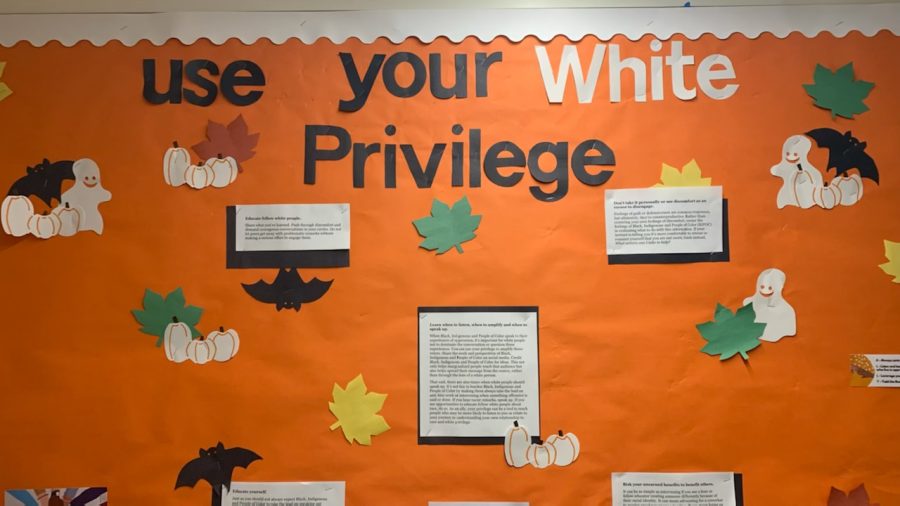Opinion: This is your sign to start listening to students of color.
In the past few weeks, it has come to our attention that the residence halls have placed board signs on the topics of racial discrimination and white privilege.
This comes to no surprise with the lead up to Social Justice Week at Pace, and the marking of 12 years since the passing of Pace student, Danroy “DJ” Henry. The week is in dedication to combating issues of discrimination on campus with the telling of DJ Henry’s story to bring social awareness as well as celebrate his life and the influence his story has made on the Pace community.
Despite this, it has become difficult to feel that Pace is being genuine in their efforts to educate students during Social Justice Week.
On the evening of the 18th of October, we came across a disturbing poster board on the fourth floor of Elm Hall which stated in big letters “Use your white privilege.” The writings included on the board, presumptively directed towards a white reader, explained tasks for white people to take in order to “help” students of color in their mission towards combating the discrimination they face.
One flier read, “There are also times when white people should speak up, it’s not fair to burden Black, Indigenous, and People of Color by making them always take the lead on anti-bias work or intervening when something offensive is said or done”.
Though the intention was to bring awareness to social justice through a new approach, this sign, unfortunately, falls short in doing so. As women of color, we believe these kinds of statements can create results that do not align with the meaning of social justice awareness we are continuing to build and empower on campus.
Translated, this sign places white readers at a place of unnecessary “responsibility” to protect, speak for and accommodate the messages of students of color on the discussion of race and our experiences living in an environment of division due to these issues.
We then came across another flier on a separate board on the second floor of Elm Hall which stated “Race is NOT real”. The question which arises in our minds in this circumstance is simply “How?”, how can an environment which values safety, inclusion, respect, and communication place such messages without consideration to whom it may affect?
We understand the power of words and specifically the tool of shock value in order to garner a serious discussion and attention, however, it is important to use words carefully and as authentically as possible for it to be taken seriously.
With a blink of an eye, a message can shift from a place of importance to a loss of reason very quickly. Rather than placing a distracting look into the “endless” opportunities of how white privilege can “benefit” the changes we demand, and affect how we treat and observe race, we need more students of color’s voices to be heard.
People of color do not want their voices to be rescued or protected from harsh circumstances. We want the opposite, we want change on our own terms, on our own time for our own safety, not with the help of reassurance. The “demand” for white people to have a responsibility to help people of color in their fight because of white privilege must stop, it does not aid people of color’s voices being taken seriously, listened to, or willingness of people to understand.
We don’t believe white people shouldn’t discuss these issues, we will always encourage support and discussion. However, if there is an opportunity for students of color to teach about the methods for change we can take, it is best for it to come out through their words only.
Walking past signs with such words on our way to our rooms creates a sense of uncomfortability, and is a reminder of what we struggle with every day. We encourage the Pace community to reevaluate these choices made in demonstrating awareness. We suggest placing signs made by students of color relating to causes of race, such as resources, websites, and student columns which allow us to bring all perspectives of the effects of discrimination on people of color.
We trust that organizations, (such as those listed below,) can develop forms of spreading awareness that can effectively demonstrate advocacy through passion, honesty, empowerment, and positivity.
- Organization of Latin American Students (OLAS)
- Students of Caribbean Awareness (SOCA)
- Asian Student Union (ASU)
- Dominican Student Association (DSA)
- Black Student Union (BSU)
Your donation supports independent, student-run journalism at Pace University. Support the Pace Chronicle to help cover publishing costs.

